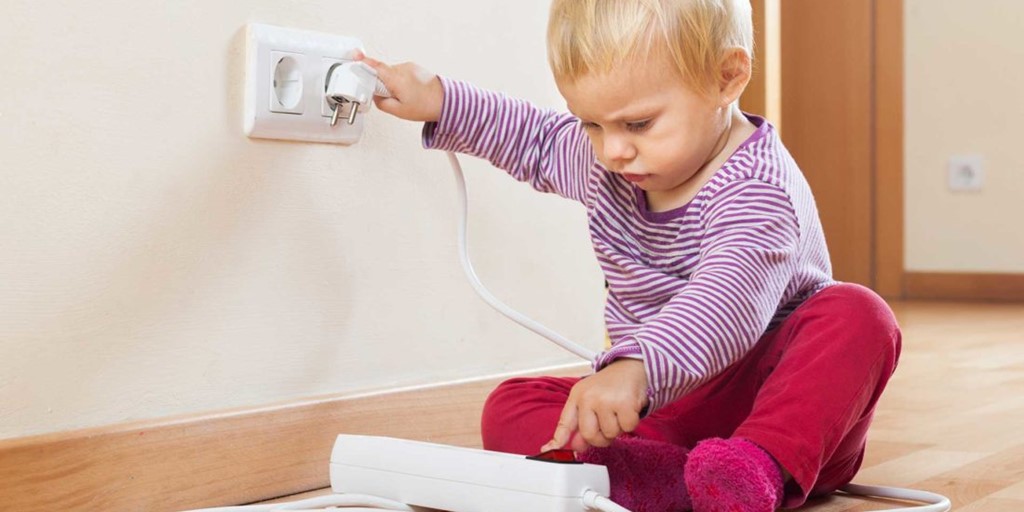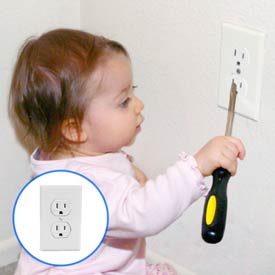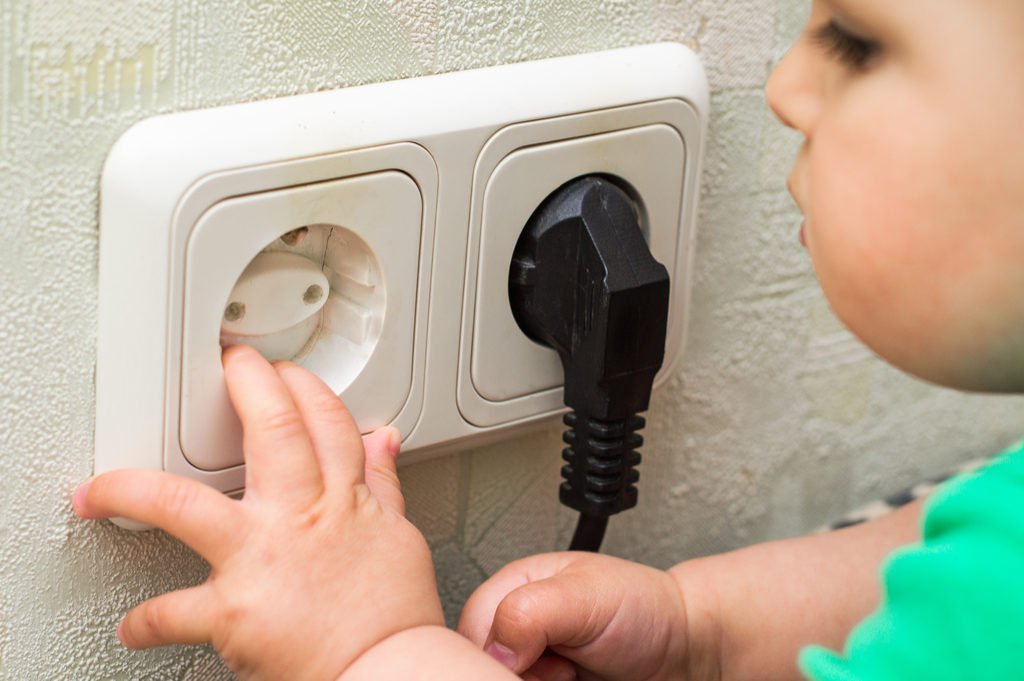hidden
hidden
Blog

Electrical Safety Tips For Kids
Electrical Safety Tips For Kids
Having children shifts the way you approach electrical safety in the home. Children are often unaware of many of the things you may take for granted about electrical safety. It is important to make time to teach kids how to properly behave around electricity as well as take your own action steps to prevent electrical problems from occurring.
Outlet Plugs, Plates, and Covers
• Outlet plugs—plastic pieces that plug directly into the outlet’s sockets—work adequately for outlets that are only used occasionally, because they can be easily removed when the outlet needs to be utilized. However, small children should not be left alone in rooms with outlet plugs, as the plugs are small and can be a choking hazard if a child were to pull them out of the socket.
• Outlet or power strip covers, on the other hand, encase the entire outlet or power strip, leaving room for cords to poke out. These are ideal for outlets or power strips that have items like lamps or laptops plugged into them full time, as they keep children from fiddling with the sockets while still allowing them to be functional.
• Outlet plates work similarly to a sliding door. Cords can be plugged into outlets when the plate is pushed to the side. As soon as the cord is unplugged, a spring slides the plate closed, covering the outlet and reducing the chance that a child will be able to poke a foreign object into the socket.
Teach Kids to Recognize Danger Signs

Verify that kids know to get help from an adult in hazardous electrical situations, and add an electrician’s number to your list of important phone numbers on the fridge.
• Determine if your fire alarms are up-to-date in case an electrical appliance starts a fire, and teach your kids what to do in the event an alarm goes off.
• Ensure that kids know what precautions to take if faced with an electrical emergency such as a downed power line, if they see a spark, or if they smell something odd in the home.
• Teach kids to recognize public signs that indicate electrical danger, like “Danger – high voltage.” Typically, these signs are branded with a lightning bolt.
Cord Safety
• Cords should never be run under rugs or baseboards, as they can overheat and cause fires. Instead, run them around the perimeter of the wall—this will also eliminate tripping hazards. Another good option is calling an electrician to install a new outlet that better fits your needs.
• To minimize the risk of fire or electrocution, regularly examine cords for signs of fraying or cuts.
• Babies who are just learning to walk do not need any hazards in their way. Bundle messes of cords together with cord tubes in areas where children could trip, such as near the computer desk or entertainment unit. Also, consider hiding cords behind furniture or using a cord-shortening device.
• Consider making alterations to your home décor to eliminate unnecessary cords. Fans can be replaced with ceiling fans, and lamps can be replaced with track lighting or wall sconces.
Demonstrate What to Do If a Shock Occurs

It can be terrifying to see a loved one receiving a shock, and it might be tempting to rush to their aid. Establish that this is the wrong choice. Likewise, you may also remember learning in grade school to poke them with a wooden broom handle or throw a towel around them and pull. Both of these could result in a shock to you as well.
If the broom handle or towel is wet or dirty, it could conduct electricity. The safest thing to do in the instance of electrical shock is to turn off the main switch of the circuit breaker to stop electricity from flowing. Verify that all family members know where the switch is located in case of an emergency.
The key to electrical safety in the home is to make sure that your kids are well informed about the hazards of electrical items. By making a few adjustments to the way you manage electricity in your home as well as teaching kids how to interact with cords, outlets, and appliances, you can transform any house into a safer place for children.